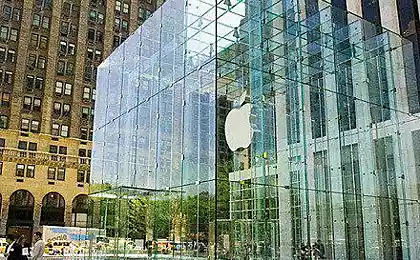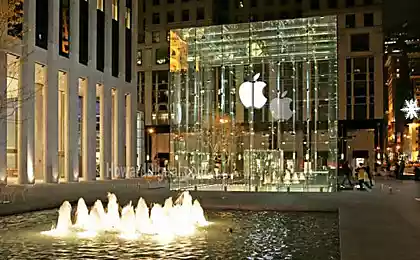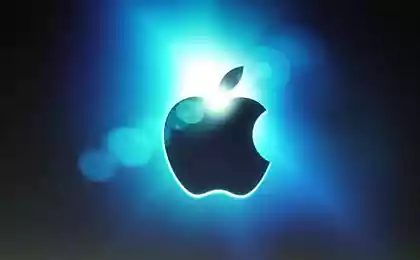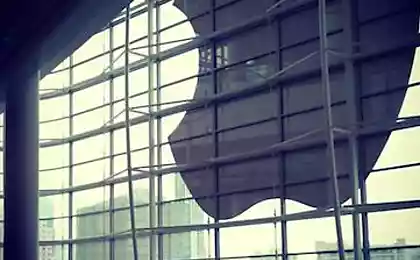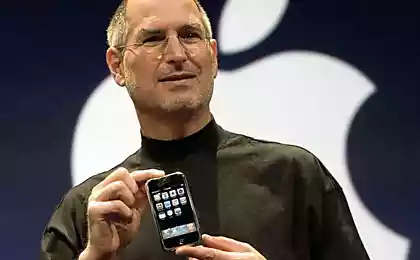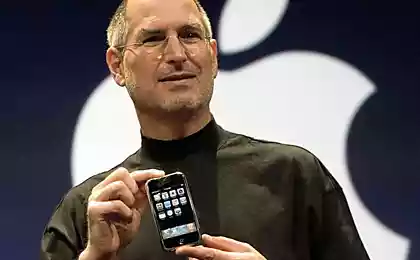Objectives of the retail network: Apple vs. IKEA
«Less than five years after the opening of the first store under the guise of a pioneer discounters Korvette’s in 1957, how to open a dozen stores sibling. Open analogue IKEA, is a giant in the field of retail furniture, unlike the case with Korvette's, no one has. IKEA is gradually expanding its network of retail stores around the world (already almost 50 years, including 13 stores in Russia [approx. Pens. - According to the author in 2012, today the number of IKEA stores in Russia may be different]), and no one else could not copy it. Why this is the case? It's not a trade secret or patent. Competitors can always go shopping IKEA, analyze products and even copy the entire directory. It's not that someone just does not need to earn - Ingvar Kamprad , owner of the company, is the third person in the world welfare. Still no one has copied IKEA.
We believe that other companies operating in the retail sale of furniture, took as the basis of positioning paradigm and define your business and the total product of certain segments of the client audience. All this can be easily copied. Levitz Furniture , for example, sells cheap furniture audience with low income. Ethan Allen sells furniture in colonial style more affluent segments of the population.
IKEA, unlike these companies built their business around a specific task: "Today I need to furnish an apartment (or room)." When someone in any part of the developed world there is such a problem - comes to mind is IKEA. The organization and logic of combining all the shops of the company is different from all the possible analogues in the retail sale of furniture, because designed to solve your problem as efficiently as possible. »
- Integration with respect to the tasks (Integrating Around the Job to Be Done - Clayton Christensen - Clayton Christensen , Harvard Business School; Scott Anthony - Scott Anthony, Innosight LLC, Scott Cook - Scott Cook, Intuit; Teddy Hall - Taddy Hall, Advertising Research Council). i> blockquote>
IKEA - the leader in the retail furniture and embodiment amazing success story. Christensen emphasizes the fact that the mystery of success is related to the apparent protection that it guarantees. No one tried to create an analogue of IKEA or undermine its position in the market.
Position themselves relatively clear task (job-to-be-done), the company has integrated as design, manufacturing and distribution (including warehousing processes) and retail trade in the style of "all in one huge box" in the experience of their customers and interact with them.
This approach may seem very familiar.
Getting started Apple in retail depended on setting clear objectives, design, carefully selected range of goods, actual experiences of customers and interact with them in the course of trade. Apple has become a major player in its segment similar to IKEA, and even reached the 17-кратного superiority in terms of sales per square foot as compared with the average retail chain operating in the United States.
At first glance Apple and IKEA seem pretty similar businesses in the areas of strategy and "architecture", but if you compare the actual performance? Can we confirm the similarity of the facts?
First, take a look at the geographical concentration of these companies. Chart located above, says that Apple's retail network mainly concentrated in North America, and 74% (365) of shops are located in the United States and Canada. On the contrary, it is possible to justify the place of the original foundation of the company, 73% (of 325) IKEA stores are in Europe (subject to exceptions, is to purchase furniture retailer Habitat in 1992).
Height IKEA, unlike history with Apple, is much slower. The first IKEA store in the 6, 700 square meters was opened in 1958. The couple first Apple stores opened in May 2001. From this moment the number of Apple stores grew much faster (The aggregate annual growth rate - CAGR - 46%) and exceeded number of IKEA stores in 2010.
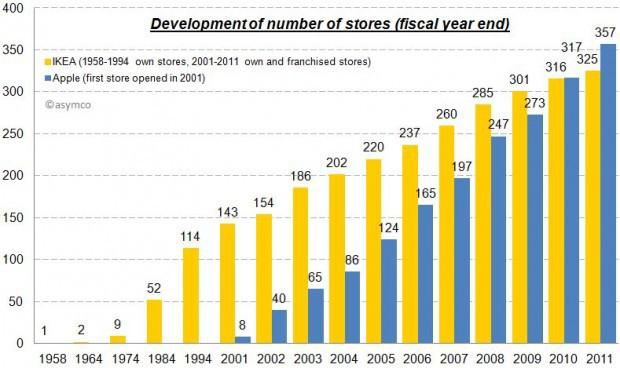
Another difference lies in the growth of sales figures. In 1954, IKEA figure income increased to approximately $ 1 million and increases smoothly (in the chart located below the first five time intervals represent the decade). Indicators of Apple, unlike the case with IKEA, grow faster, and this story is more profitable in terms of margins.
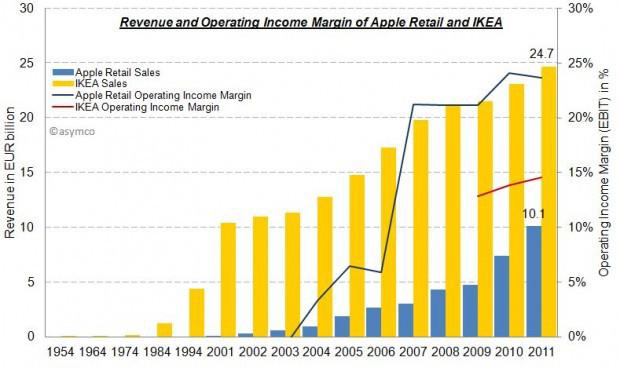
The difference in growth rates is partially justified by the fact that Apple has been able to subsidize their entry into the market - retail chain of Apple was losing the first three years, and IKEA was forced to fund from its own resources.
After all, Apple's retail network has gained self-sufficiency, and today it is more profitable than IKEA. The following series of diagrams gives a comparative overview of indicators retailers Apple and IKEA:

[store median income (millions of dollars.) The number of issued catalogs (millions of shares); Number of visitors (million persons). The average income per visitor (USD.); The number of employees in the retail network (pers.); Average income per employee (million dollars.) Apple - the average area of the store (sq. Feet); IKEA - the average area of the store (sq. Feet); The area involved in sales (sq. Feet); The average income per one sq. ft (USD.)] i>
While the average revenue per Apple store continues to grow, IKEA business looks more mature and stable. This is explained by the fact that the prices of the furniture is stable, and the number of products ( SKU ) depends on the available space (which can not grow) per store. Apple, unlike IKEA, the only limit is the issue of traffic. Its production takes up little space, which allows remote warehouses [approx. pens. - Do not store in the store all at once].
Speaking of traffic, it is worth noting the fact that IKEA has attracted twice as many visitors to its stores than Apple, if you look at the data for the year 2011, when visited IKEA stores 655 million people. However, every visitor IKEA on average spend 27 dollars, and visitors to the store Apple - twice.
The situation is similar to the productivity of employees of retail networks. IKEA has a threefold superiority on their number, but the average income per employee of Apple and a half times higher.
The main difference lies in efficient use of space. If we talk about the total area involved in the sales, IKEA surpasses Apple 30 times.
While these indicators form a logical connection, they do not help us to understand the prerequisites for success. Both companies have completely different approaches to the retail trade, and the values of indicators seem contradictory. What works for one company may not be applied to the other.
Lack of magic formula for creating a revolutionary retailer is a fact. For example, in terms of sales per square foot IKEA does not even enter the top 20 US retailers.
However, the unifying factor for Apple and IKEA is a clear approach to the positioning of their retail networks. Both networks are organized with respect to the task that has the highest priority in life. As noted in the opening quote for IKEA it can be formulated as: "I need today to furnish an apartment (or room)." Problems solved retailer Apple, Tim Cook formulated:
«Our retail stores offer the best experience in the acquisition of goods and best service to customers. This is important not only for buyers Macintosh, to some extent, it is more important for buyers iPad, iPhone or other device era "post-PC", because these devices many people are unfamiliar. And there is a need for familiarity with these devices, their study prior to the acquisition and study of the entire spectrum of possibilities after the acquisition. » - Tim Cook, March 2012 i>. Blockquote>
Apple provides the opportunity to study and find answers to questions related to technology, without any pressure on the potential buyer. The challenge is to simplify what is complex, for a certain price.
IKEA provides an opportunity to get exactly what people want, at a time when they need it. The only disadvantage is that it requires "some training". Somewhat IKEA problem is to introduce a certain level of complexity for convenience and cost reduction.
In the end, both companies have their problem solved and get decent remuneration for it.
Source: habrahabr.ru/company/audiomania/blog/217133/




